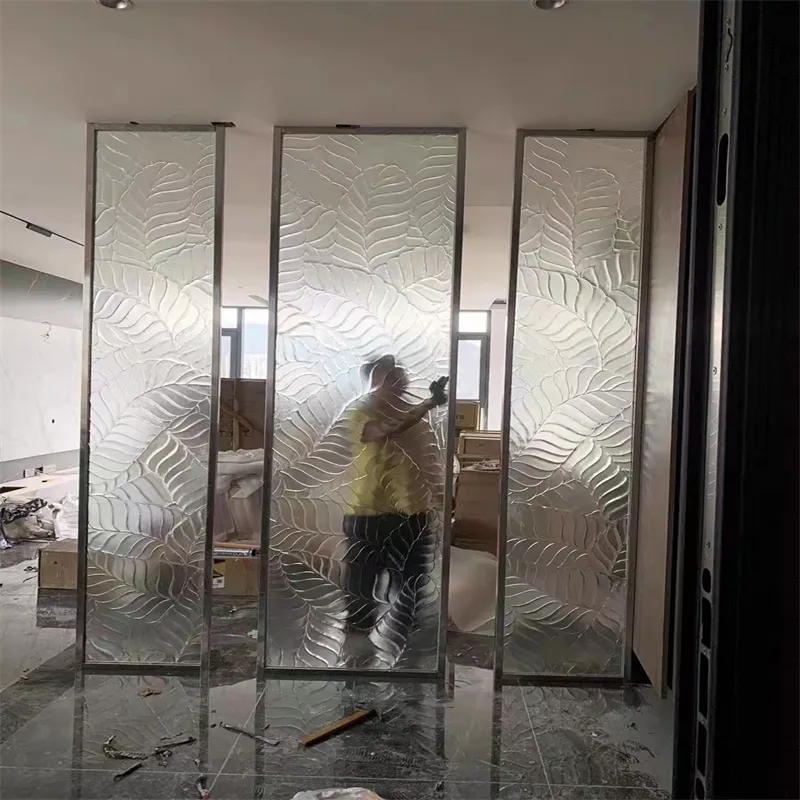Nov . 25, 2024 15:12 Back to list
Exploring Different Types of Toughened Glass for Various Applications
Understanding Toughened Glass Types
Toughened glass, also known as tempered glass, is a type of safety glass that has undergone a specific process to enhance its strength and durability. The manufacturing process involves heating the glass to high temperatures and then rapidly cooling it. This treatment alters the internal structure of the glass, enabling it to withstand greater stresses than normal glass. Toughened glass is widely used in various applications due to its strength and safety features. In this article, we will explore the different types of toughened glass, along with their unique characteristics and uses.
1. Standard Toughened Glass
Standard toughened glass is the most common type. It is manufactured using the standard tempering process, which involves heating to around 620°C and then rapid cooling. This type of glass is substantially stronger than regular glass and can endure significant impact. It is typically used in applications such as shower doors, glass doors, windows, and tables, where safety and durability are paramount.
2. Laminated Toughened Glass
Laminated toughened glass consists of two or more layers of glass bonded together with a special interlayer. In the event of breakage, the glass fragments adhere to the interlayer, reducing the risk of injury. This type of glass is ideal for situations where increased safety is a priority, such as in facades, skylights, and glass floors. Additionally, laminated toughened glass provides sound insulation, making it suitable for noisy environments.
3. Heat-Soaked Toughened Glass
toughened glass types

Heat-soaked toughened glass undergoes an additional process where it is subjected to prolonged heating. This process helps identify and eliminate any spontaneous breakage due to nickel sulfide inclusions, a phenomenon that can lead to unexpected shattering. As a result, heat-soaked toughened glass is preferred in high-risk areas such as façades and balustrades, where maintaining safety standards is essential.
4. Double Glazed Toughened Glass
Double glazed toughened glass consists of two panes of toughened glass separated by a spacer and filled with argon gas or vacuum-sealed to enhance thermal insulation. This type not only provides superior insulation against temperature fluctuations but also offers soundproofing benefits. Double glazed units are commonly used in residential and commercial buildings to improve energy efficiency and comfort.
5. Low-E Toughened Glass
Low-E (low emissivity) toughened glass is coated with a thin layer of metal oxide, reducing the amount of ultraviolet and infrared light that can pass through while still allowing visible light. This type of glass provides excellent energy efficiency, making it suitable for windows in energy-conscious buildings, as it helps maintain indoor temperature while reducing dependency on heating and cooling systems.
Conclusion
Toughened glass is an essential material in modern construction and design, offering strength, safety, and a variety of applications. Understanding the different types of toughened glass helps consumers make informed choices based on their specific needs, whether for residential, commercial, or industrial use. As technology advances, the possibilities for utilizing toughened glass continue to expand, promising a future of enhanced safety and design flexibility.
-
Safety and Style with Premium Laminated Glass Solutions
NewsJun.24,2025
-
Reinvents Security with Premium Wired Glass
NewsJun.24,2025
-
Premium Float Glass Line for Modern Architecture
NewsJun.24,2025
-
Low Emissivity Glass for Energy-Efficient Architecture
NewsJun.24,2025
-
High-Performance Insulated Glass Solutions for Modern Architecture
NewsJun.24,2025
-
Elevates Interior Style with Premium Silver Mirror
NewsJun.24,2025
Related PRODUCTS














